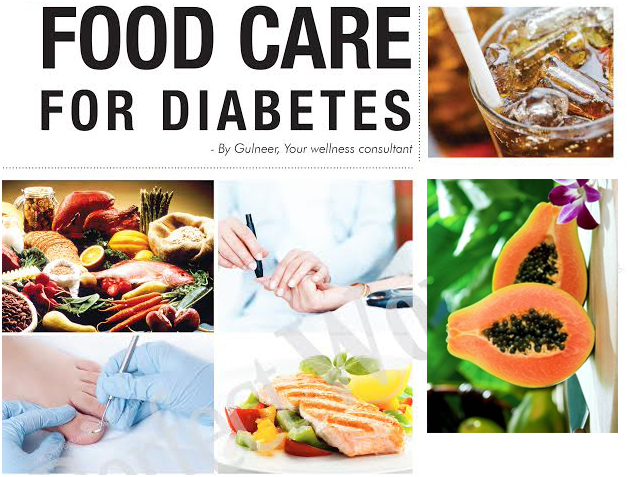
Diabetes is a disease in which blood glucose or blood sugar levels are too high. Glucose comes from the food we eat. Insulin is a hormone that helps the glucose move into the cells to provide them with energy. With type I diabetes our body does not make enough insulin. With type II diabetes, the most common type, body does not make or use insulin well. Without insulin the glucose stays in the blood. One can suffer from pre-diabetes. This means that blood sugar is higher than normal but not high enough to be called diabetes. Pre-diabetes put you at higher risk of getting type II diabetes. Diabetes can also cause serious health problems like heart disease and stroke. Pregnant women can also suffer from diabetes, called gestational diabetes. Exercise, weight control and sticking to your meal plan can help control diabetes.
A diabetic diet is simply a healthy eating plan that is high in nutrition, low in fat and added sugar and moderate in calories.
Diet Tip:1 Choose high fiber food
Carbohydrates have a big impact on blood sugar level – even higher than proteins and fat. Its best to limit highly refined carbs like white bread, pasta and rice as well as soda, candy and snack food. Focus on high fiber complex carbs – also known as slow release carbs.
Glycemic Index and its effect
High glycemic food spikes blood sugar rapidly while low glycemic food has the least effect. Low glycemic food takes longer to digest so sugar is absorbed more slowly into the blood stream.
Few principles of low-glycemic eating
- Consume non – vegetables and fruits such as apples, pears, peaches, berries and papaya.
- Consume grains, least processed grains such as whole grain flour for chapattis, broken kernels of wheat for porridge, multigrain flour from different nutrient dense grains or natural granola and breakfast cereal.
- Limit refined grain products where nutrients from germ and bran is completely removed during processing such as those in white pasta and white breads.
- Consume lean part of protein from animal source and include more from vegetable origin as pulses and lentils.
- Eat only, when hungry and limit your portion sizes to your calories required per day.
Few more points to remember while cutting down on sugar.
- Limit yourself on soft drinks and soda.
There was a recent study found that each 12 oz serving of a sugar sweetened beverage you drink a day, your risk of diabetes increases by about 15%. Try with sparkling water with a few drops of lemon or lime. Reduce the amount of sweeteners you add to tea and coffee drink. - Read labels carefully and consider low sugar products and consume fresh or Frozen ingredients instead of canned goods.
- Add table sugar to your drinks instead of consuming already added ones in drinks. Purchase unsweetened ice tea, plain yogurt. One is likely to add less sugar than the package one.
- Reduce the amount of sugar in the recipes by 1/4th to 1/3 rd. If a recipe ask for 1 cup of sugar, use 2/3rd or ¾th cup instead. One can also add sweetness with cinnamon, nutmeg, or vanilla extract instead of table sugar.
- Look for hidden sugar on the label.
Manufacturers should provide with the total amount of sugar per serving. Added sugar should be included in the ingredient list. A wise approach is to avoid products that have any of these products in the ingredient list like invert sugar, high fructose corn syrup, sucrose (table sugar).
